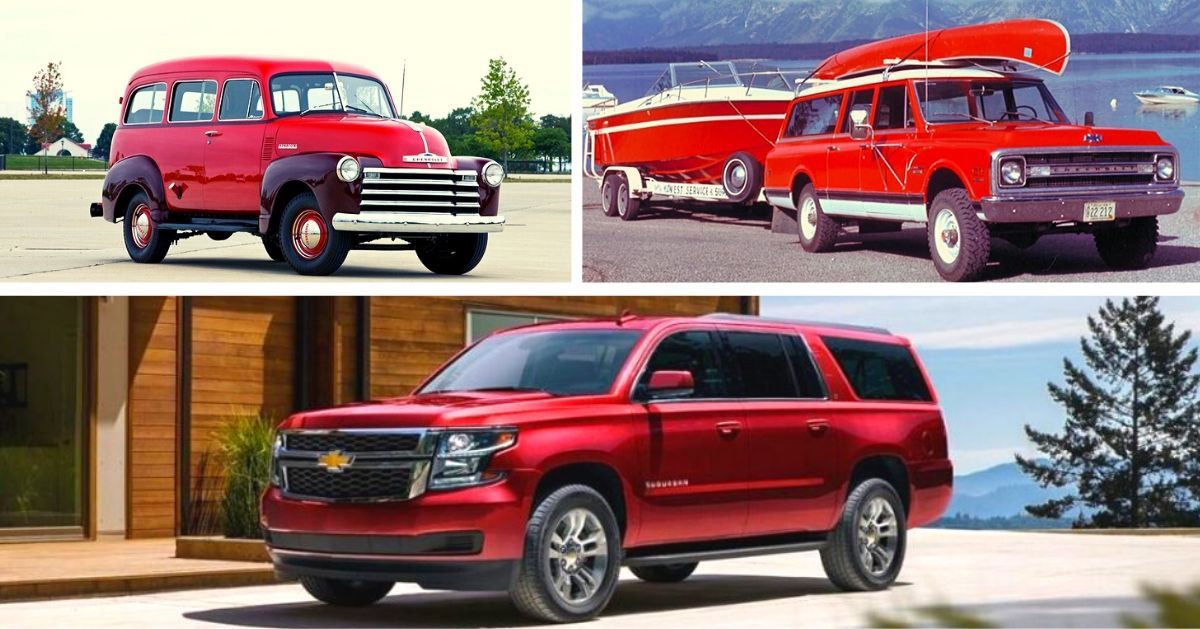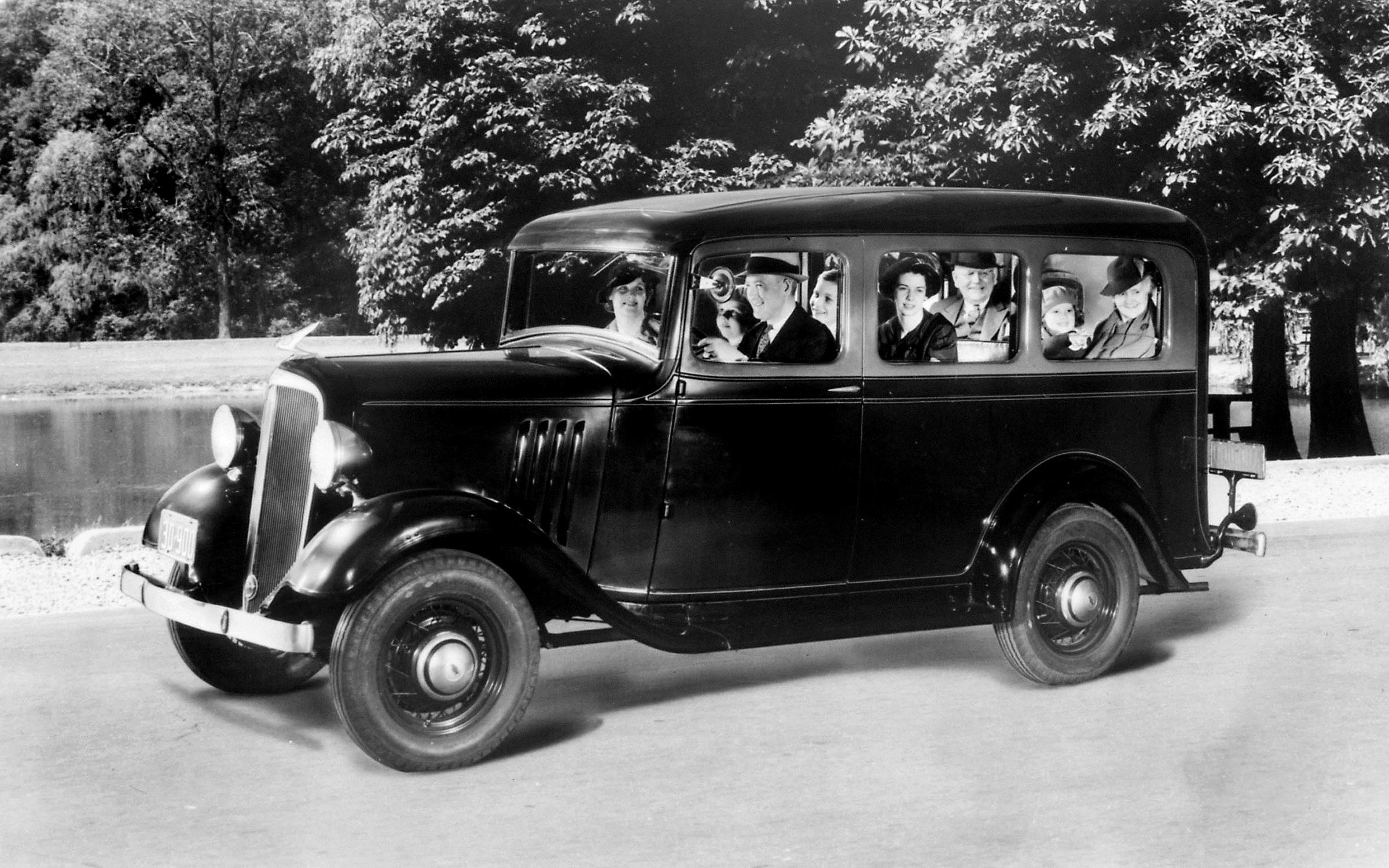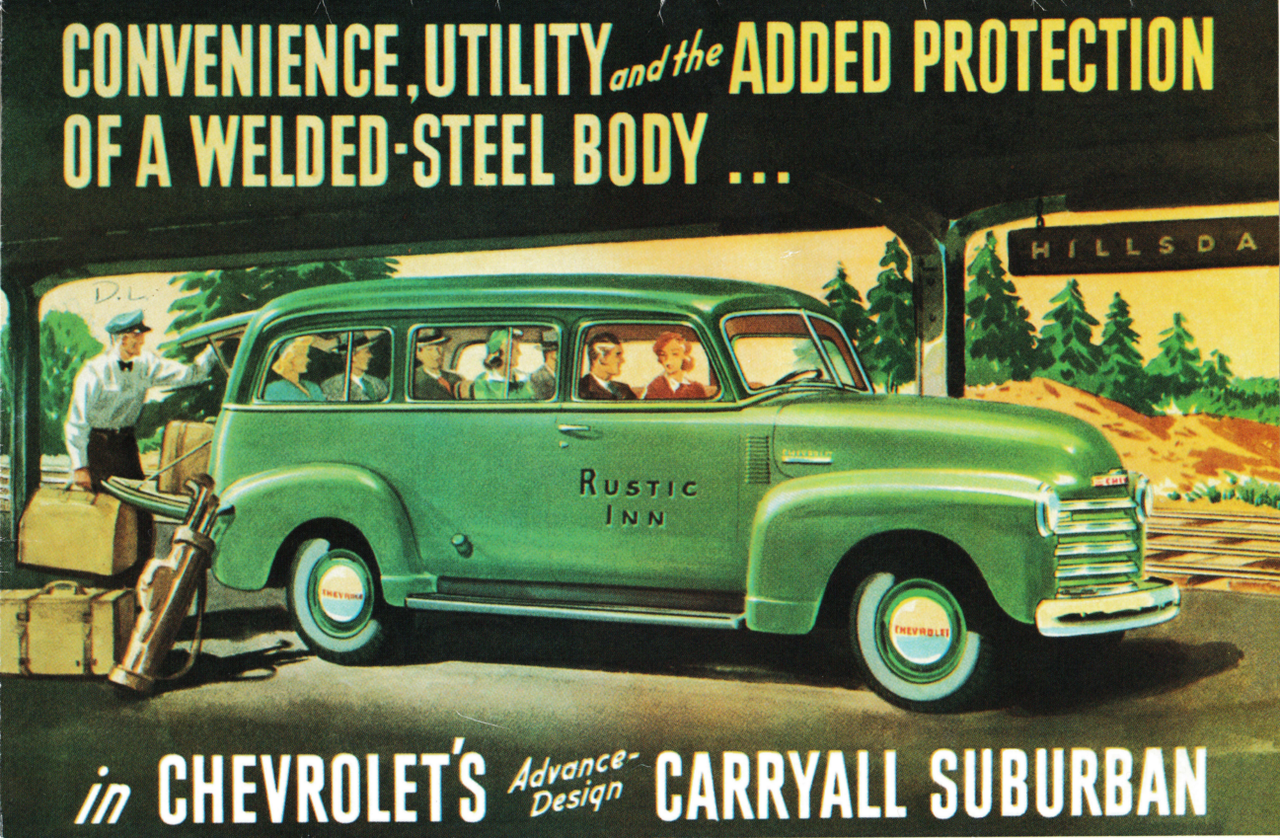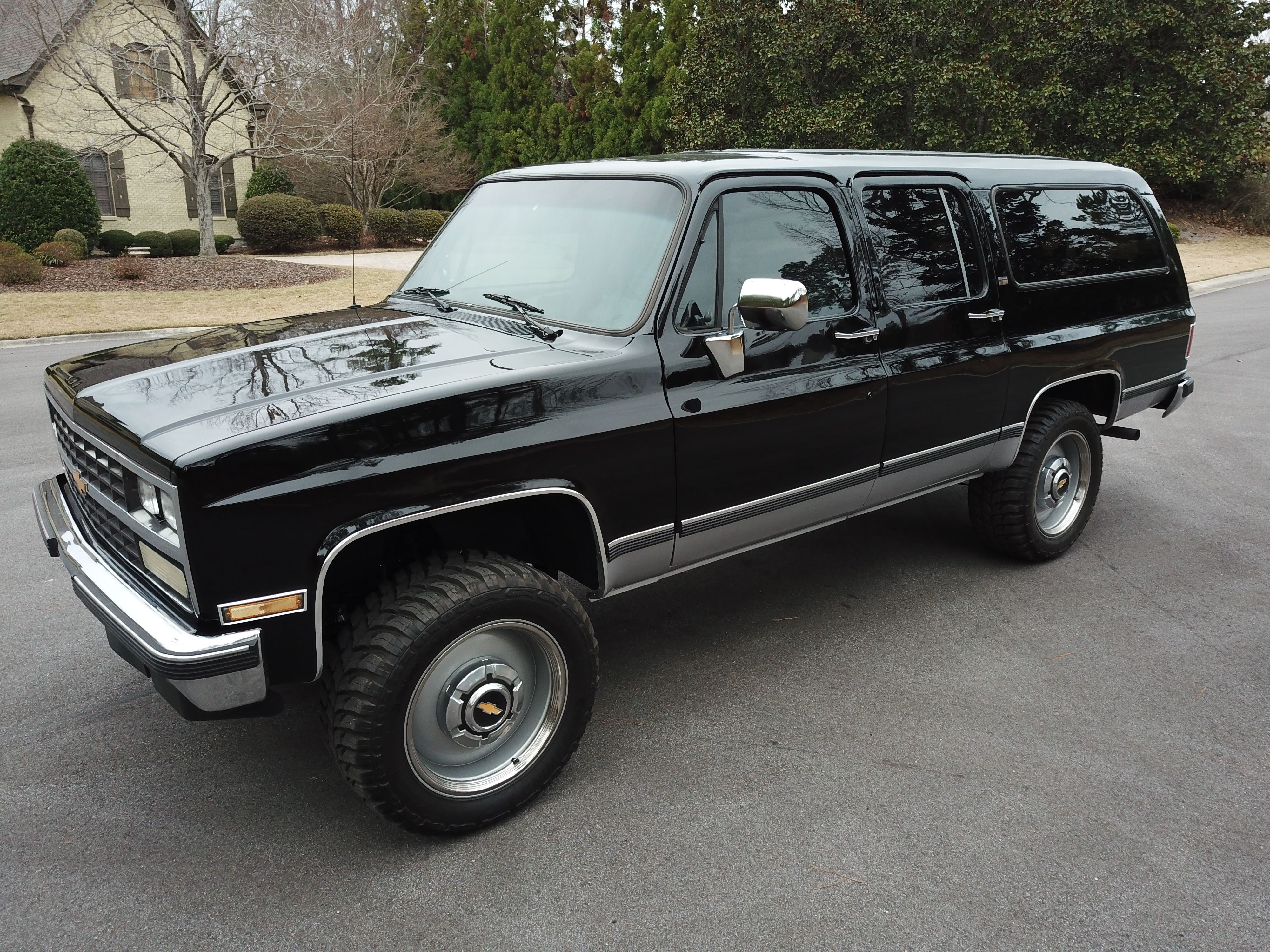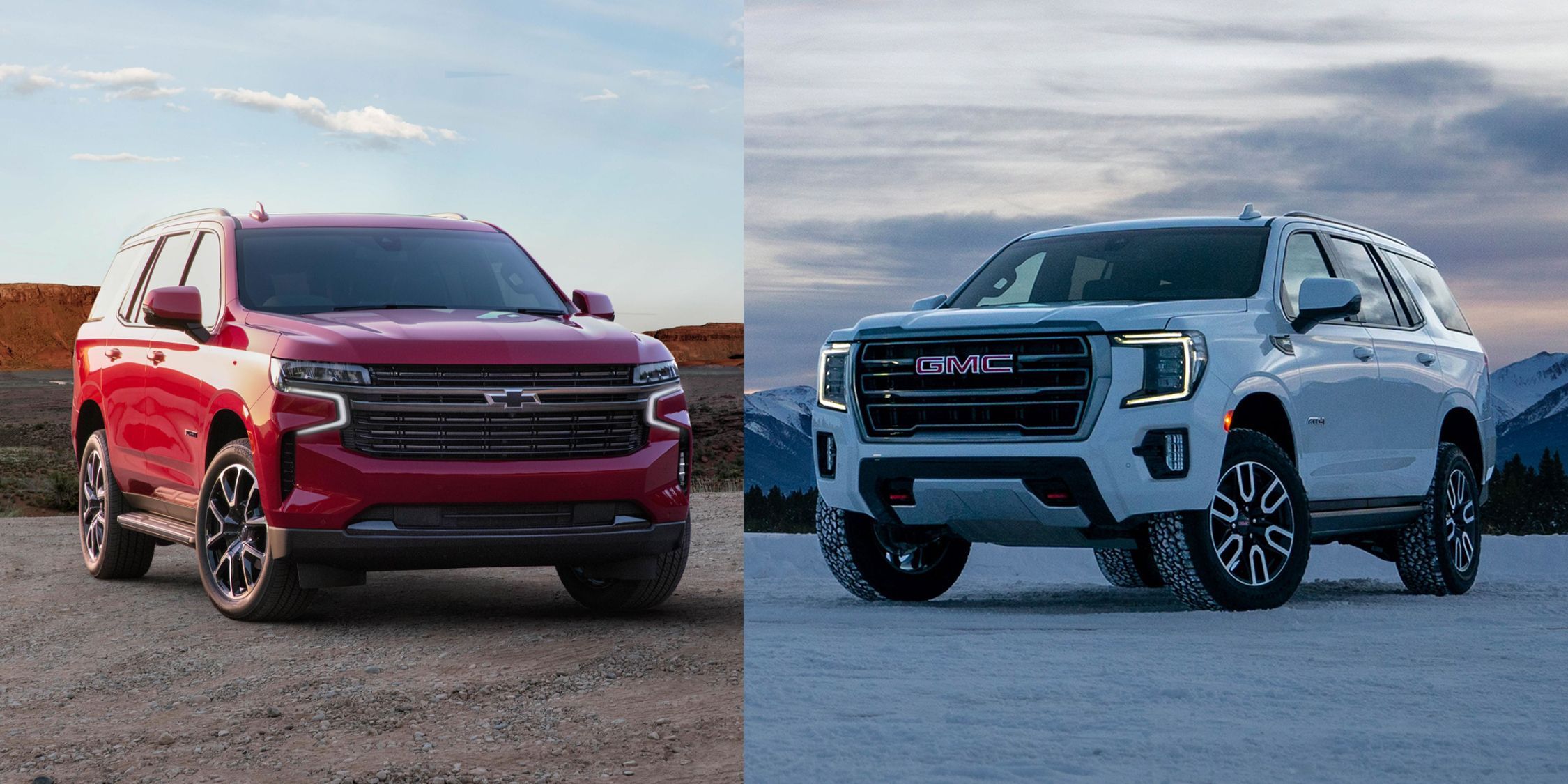As the shadow of the Great Depression shrank, and the dust bowl settled in American lungs, automotive manufacturers were trying to engineer the inexpensive and functional cars that the market demanded.
One such demand was for a large people-mover that was capable of carrying families and/or businesses and all their cargo through long stretches of unforgiving highway or just across town, in Detroit. It was at this time that an automaker who was earning a reputation built on industry innovation and leadership--Chevrolet. Unceremoniously, Chevy stamped station wagon sheet metal and mated it to the frame of a small, cheap pickup truck. In doing so, Chevy created a new class of vehicles that would go on to drive industry growth for the next 85 years, the sports utility vehicle, or SUV.
1935 - A Nameplate is Born
Unofficially named the "Carryall Suburban," in 1935, 2020 marks the 85th anniversary of Chevy’s longest-running nameplate. The two-doored wagon pushed around a family of eight with a 60 hp 3.4L I6, has removable seats, giving the owner a massive cargo area. That is, to put into context, right in between the 2020 Chevy Silverado's standard and long-sized bed...with the tailgate down. With a base price, which didn’t include a rear bumper or heater, of $675 ($10,500 today) the capability of the truck, and the Great Depression slowing, sales of the cheap pickup truck skyrocketed.
1941 launched second-generation Suburban, which, according to Motor Trend, saw Chevy drop in a 3.5L with 90 hp and GMC install their own 3.7L and a small bump in hp to 93, along with minor cosmetic changes.
Wartime, the Boom, and the Oil Crisis
The United States entering World War II in 1941 marked the end of the second generation and beginning of wartime production. From 1942 to 1946, the Suburban did not produce civilian vehicles.
Picking up where they left off, in 1947, Chevy dusted off their boots and began producing the third generation Suburban. The same year saw improvements in suspension and power (thanks to wartime developments) but also utilized their "Advance Design" that quickly became the face that went to influence classic pickup trucks for decades.
Innovations of the 1950s and 1960s
The 50s and 60s were eras in which cars began to look and gain modern features, like:
• 1953 - Hydro-Matic 4-speed automatic transmission
• 1955 - The fourth-generation introduces “Smooth-side” styling
• 1956 - GM began installing Northwestern Auto Parts Company (NAPCO) 4x4 kits in-house
• 1960 - The fifth-generation brought factory-engineered 4WD, improved suspension, and larger engine options, including an unusually large 305-cu-in GMC V-6 with 150 hp
• 1967 - The sixth-generation* added an extra passenger-side door and new engines ranging in size, from the 283ci small block to the 402 big blocks!
• 1969 - Two-door, short-wheelbase, convertible options, the Blazer and Jimmy, became available. Debatably the best-looking generation
Additions of the 1970s and 1980s
The 1970s and 80s were periods of high gas prices and little innovation, it was the Suburbans seventh, and longest generation. In the end, Chevys's largest SUV had gained features now taken for granted, like:
• Optional A/C
• Disc brakes
• A [Detroit] Diesel option
• Fuel injection for gasoline engines
The 1990s to 2007
Cars were stale in the 1990s and 2000s. Roads looked a bit different. The price of a barrel of oil fell by over $10 per barrel, driving the price of gasoline down and, thanks to low fuel prices, and SUVs began dominating the roads. Safety is the theme of the 90s when the suburban finally acquired:
• 1990 - Rear anti-lock brakes
• 1990 & 2000 - Better overall suspension
• 1996 - Airbags
• 1998 - OnStar standard, AWD, etc.
Amidst growing gas prices and stricter emission standards, GM was ready to make some changes, mechanically, cosmetically, and philosophically by learning from the past and focusing on better efficiency and creature comforts, such as:
• 1998 - GM’s most expensive SUV, the Cadillac Escalade
• 2000 - Better-flowing Vortec 5300 and 6000 engines
• 2001 - The Suburban-based truck, the Chevy Avalanch is announced
From 2007 - Onward
2007 was a year of generational change. It was the year the Suburban cut their tethers and began receiving handsome sheet metal that was more aerodynamic and not based on a full-sized truck. Big changes were made, and then stalled until 2015, when the 11th generation Chevy Suburban began focusing on better fuel economy and comfort, eventually offering:
• Lowered architecture/aerodynamics
• Direct-injected V8s (twice improved!)
• Increased aluminum use
• 3.0L I6 turbo-diesel
• 10-speed automatic transmissions
Chevrolet has always prided itself on being built on innovation and leadership, and the Suburban is proof. An innovative and practical design spurred 12 generations, survived the SUV rush of the 90s, and crash of the oughts and the Suburban is still holding strong. No wonder it has remained so recognized. What we can conclude is the Suburban has remained one of the best SUVs for the last 85 years and counting.

